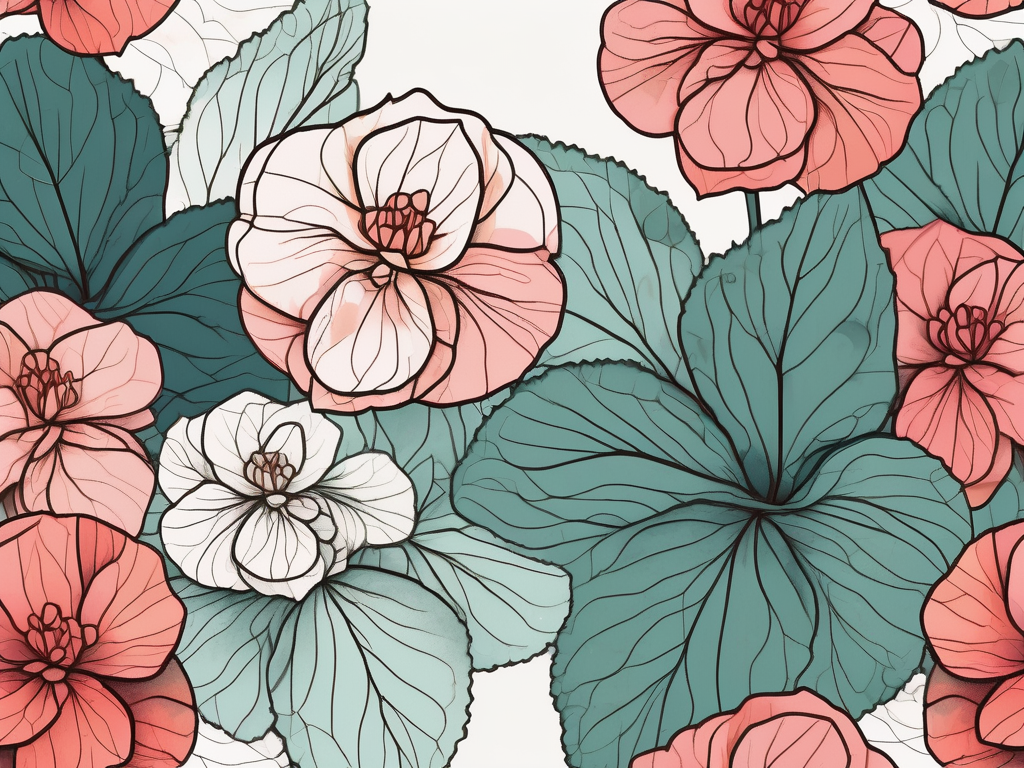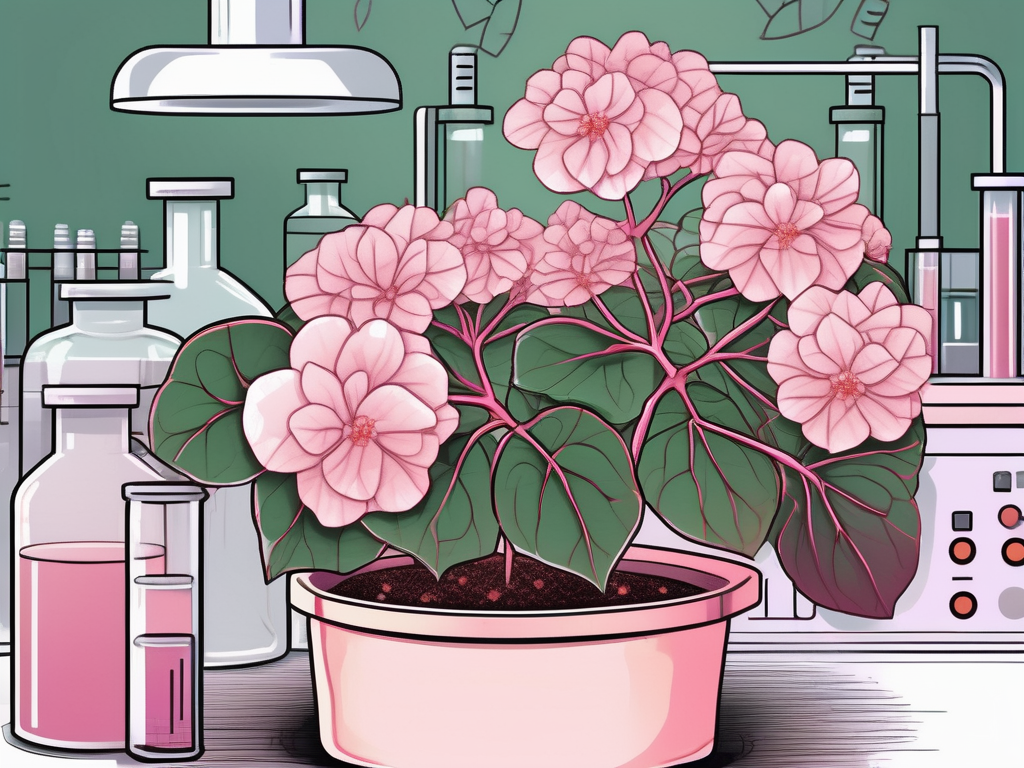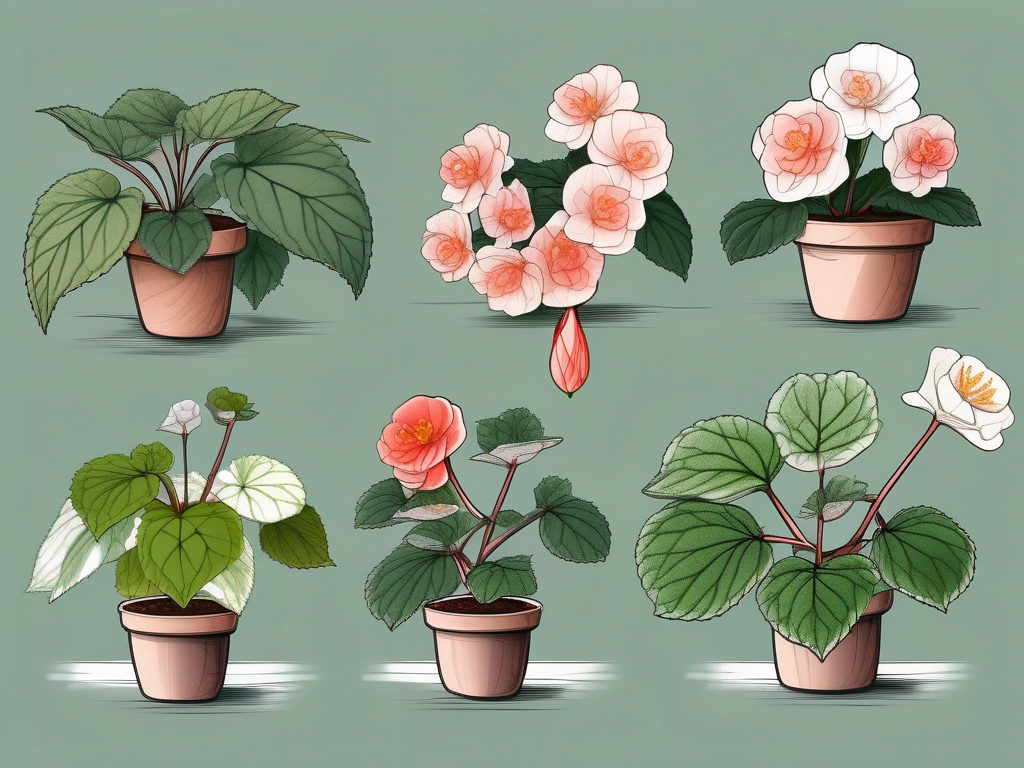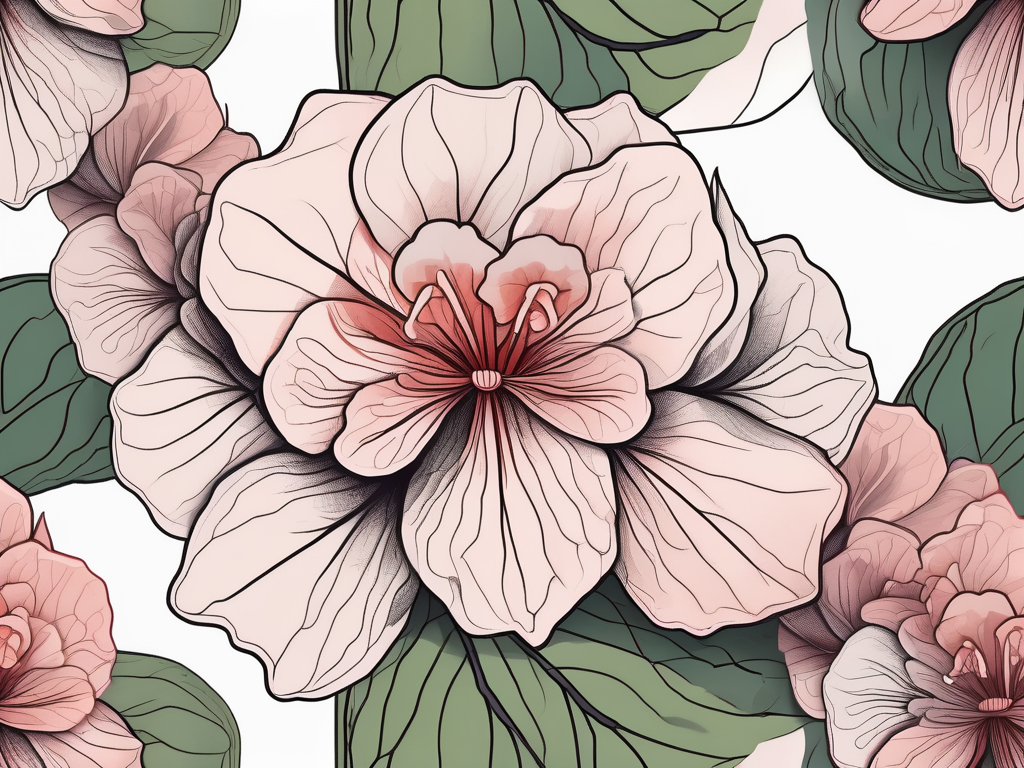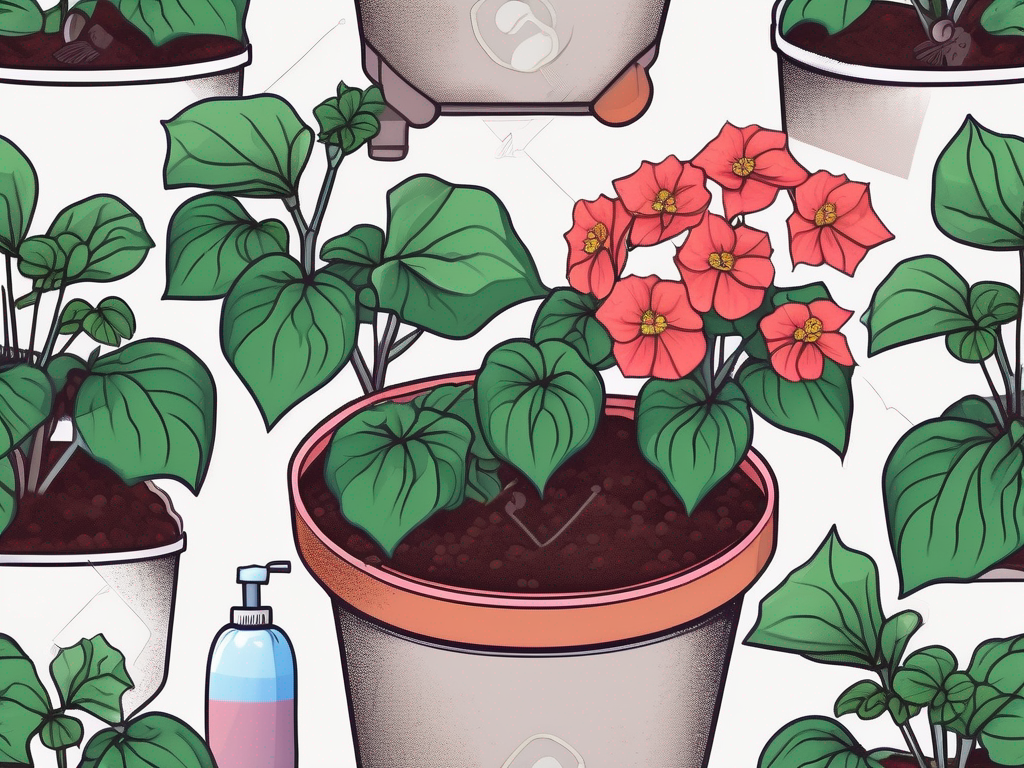
Wax begonias are a delightful addition to any home, bringing a splash of color and a touch of elegance with their shiny, waxy leaves and vibrant blooms. Whether you're a seasoned plant lover or just starting your journey into the world of houseplants, these hardy plants offer a rewarding experience without demanding too much of your time and energy.
This article will guide you through the care and maintenance of wax begonias, covering everything from selecting the right variety to troubleshooting common issues. You'll learn how to create a thriving environment for your plant, ensuring it remains a beautiful focal point in your home for years to come.
Selecting the Right Wax Begonia
Before you bring home a wax begonia, it's important to pick the right variety for your space and lifestyle. Wax begonias come in several types, each with its unique charm. They range from those with subtle whites and pinks to those boasting fiery reds and oranges. Often, the choice boils down to personal preference and the aesthetic you're aiming for in your home.
One tip for selecting a healthy plant is to look for vibrant, glossy leaves free from spots or discoloration. The soil should be slightly moist, indicating regular watering and care. If you're buying from a nursery, don't hesitate to ask about the plant's history and any care tips the staff might have. After all, they've often nurtured these plants from seedlings and can provide valuable insights.
Here are some popular wax begonia varieties you might consider:
- Begonia semperflorens: Known for its continuous blooming cycle, this type is a staple in many gardens and homes. It thrives in both sun and shade, making it versatile.
- Begonia ‘Cocktail’ series: These have a more compact growth habit and are perfect for small spaces or container planting.
- Begonia ‘Super Olympia’ series: This variety is known for larger flowers and can be an eye-catching feature in your home or garden.
Choosing the right variety sets the stage for successful care and maintenance, so take your time and enjoy the selection process.
Finding the Perfect Spot
Location is crucial for your wax begonia to thrive. These plants prefer bright, indirect light, which mimics their natural environment. Think of a space where the sun filters softly through a curtain or a shaded spot in your home with ample light. While they can tolerate some direct sunlight, too much can scorch their leaves, turning them brown and crispy around the edges.
If you're limited on bright spots, don't worry! Wax begonias adapt well to lower light conditions, although this might slow down their growth and blooming. If you notice your plant becoming leggy or stretching towards the light, it might be time to relocate it to a brighter area.
Interestingly enough, wax begonias are also quite forgiving when it comes to temperature. They prefer a comfortable range of 60-75°F (15-24°C), similar to what we enjoy in our homes. Be cautious of drafts and sudden temperature changes, which can stress the plant. Avoid placing them near heaters or air conditioners, as extreme fluctuations can be detrimental.
For those who love experimenting, try placing your wax begonia in different areas to see where it thrives best. It's a bit of a dance between light and temperature, but finding that sweet spot can make all the difference.
Potting and Soil Essentials
Potted plants, like wax begonias, thrive when their root system has the space and the right environment to grow. The pot you choose should have drainage holes to prevent waterlogging, which can lead to root rot. A pot that's too large can retain excess moisture, while one that's too small might restrict growth.
When it comes to soil, wax begonias aren't overly fussy. A well-draining potting mix is ideal, as it allows the roots to breathe while retaining enough moisture for the plant. You can achieve this by mixing standard potting soil with a bit of perlite or sand to enhance drainage.
If you're repotting a wax begonia, gently remove it from its current pot, being careful not to damage the roots. Shake off excess soil and look for any roots that are brown or mushy. Trim these away to encourage healthy growth. Place the plant in its new pot, fill with fresh soil, and water lightly to help settle it in.
Remember, repotting can be a stressful time for any plant, so keep an eye on your wax begonia for a few weeks afterwards. It might take some time to adjust, but soon enough, it should start spreading its roots and growing happily in its new home.
Watering Wisely
Watering your wax begonia correctly is one of the most important aspects of its care. These plants prefer their soil to be kept consistently moist but never soggy. Overwatering can be a common mistake, leading to droopy leaves and root rot.
A good rule of thumb is to water when the top inch of soil feels dry to the touch. This might mean watering more frequently in the summer and less so in the winter. When you water, do so thoroughly until you see water draining from the bottom of the pot. This ensures the roots are getting the hydration they need.
Another tip is to water in the morning, allowing any excess moisture on the leaves to dry throughout the day. This prevents fungal issues and helps the plant process water more efficiently. If you're unsure, err on the side of underwatering, as wax begonias are more forgiving of dry spells than constant sogginess.
Keep in mind that factors like temperature, humidity, and pot size can affect how often you need to water. With a little practice, you'll soon develop a feel for your plant's watering needs, making it a breeze to keep your begonia happy and healthy.
Feeding for Growth
Fertilizing your wax begonia is like giving it a nutrient boost to support growth and blooming. During the growing season, typically from spring to early fall, feed your plant every four to six weeks with a balanced, water-soluble fertilizer.
It's best to dilute the fertilizer to half the recommended strength to avoid overwhelming the plant. Over-fertilizing can lead to salt buildup in the soil, causing leaf burn and stunted growth. If you notice a white crust on the soil's surface, it's a sign to flush the soil with water to remove excess salts.
During the winter months, when growth slows, you can reduce feeding or stop altogether. This gives the plant a chance to rest and gather energy for the next growing season. As always, observe your plant and adjust feeding based on its health and vigor.
Feeding can seem daunting at first, but think of it as a treat for your plant. With the right nutrients, your wax begonia will reward you with lush leaves and vibrant blooms, brightening up your space even more.
Pruning and Maintenance
Regular pruning helps maintain the shape and health of your wax begonia. It's a straightforward process that involves removing dead or yellowing leaves and spent flowers. This not only keeps the plant looking tidy but also encourages new growth and more blooms.
Using clean, sharp scissors or pruning shears, snip off any unwanted parts at the base of the stem. Be careful not to remove too much at once, as this can stress the plant. A little trim here and there is often enough to keep your begonia in top shape.
If your plant becomes leggy or sparse, pinch back the stems to encourage bushier growth. This might seem counterintuitive, but by removing the tips, you stimulate the plant to produce new branches and leaves.
Pruning is also a great time to inspect your plant for any signs of disease or pests. Look for unusual spots, holes, or sticky residue on the leaves, addressing any issues promptly to prevent them from spreading. Regular maintenance keeps your wax begonia thriving and looking its best, making it a centerpiece of your home.
Dealing with Pests and Diseases
Like any houseplant, wax begonias can occasionally face pest and disease challenges. Common pests include aphids, spider mites, and mealybugs, which are attracted to the plant's lush foliage.
If you notice any of these critters, act quickly to prevent an infestation. A gentle solution of water and dish soap can be effective for cleaning the leaves. Simply spray the affected areas and wipe with a damp cloth to remove pests. For more stubborn cases, a neem oil spray or insecticidal soap can be used.
Diseases such as powdery mildew and botrytis can occur in humid conditions. To prevent these, ensure good air circulation around your plant and avoid getting the leaves wet when watering. If you spot any signs of disease, remove affected leaves promptly and adjust care practices to reduce humidity levels.
While dealing with pests and diseases can be frustrating, it's all part of the journey of plant care. With a little vigilance and prompt action, your wax begonia will continue to thrive, rewarding you with its beauty and charm.
Incorporating Wax Begonias into Your Home Decor
Wax begonias are not only easy to care for but also incredibly versatile when it comes to decorating your home. Their colorful blooms and glossy leaves can brighten up any space, adding a touch of nature's beauty to your decor.
Try placing them in decorative pots that complement your home's color scheme. A bold, vibrant pot can make the plant pop, while a neutral one can provide a subtle, elegant backdrop. Wax begonias also pair well with other houseplants, creating a lush, layered look in your living room or on your balcony.
Another idea is to use wax begonias as a focal point on a coffee table or a windowsill. Their compact size makes them perfect for small spaces, and they can be easily moved around to suit your changing decor preferences.
Don't be afraid to get creative! Wax begonias can be incorporated into various settings, from modern minimalist to cozy and eclectic. Their adaptability allows you to experiment and find the perfect spot where they can truly shine, making your home a more inviting and vibrant place.
Final Thoughts
Caring for wax begonias is a delightful experience, offering vibrant color and lush greenery with just a bit of attention and care. By following the tips and techniques shared in this article, you can enjoy a thriving wax begonia that enhances your living space beautifully.
At Cafe Planta, we're passionate about helping plant lovers cultivate their green spaces. Whether you're looking to expand your collection or need advice on plant care, we're here for you. Feel free to email us or reach out on Instagram to connect and share your plant journey. Let's grow together!














